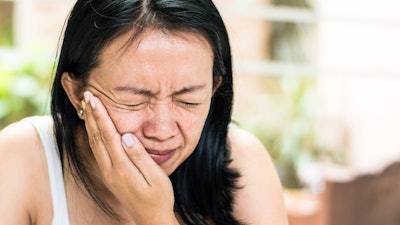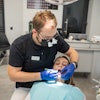
The incidence of orofacial pain appears to have risen since the onset of the COVID-19 pandemic, with patients reporting spikes in facial and oral mucosal pain before and after infection. This cross-sectional study was published in the International Dental Journal.
However, factors like sex, infection timing, and beverage preferences may affect COVID-19 infection and orofacial pain (CIOP), the authors wrote.
"The morbidity of orofacial pain appears to have increased significantly due to the COVID-19 epidemic," wrote the authors, led by Shiyang Zhuang of Fujian Medical University in China (Int Dent J, August 3, 2024).
Currently, the positivity rate of COVID-19 in the U.S. is about 18%, according to the U.S. Centers for Disease Control and Prevention.
For this study, a total of 1,526 participants, with an average age of 32.05 ± 10.18 years, took part in an anonymous web-based survey that was conducted between April and May 2023.
The survey collected demographic data, assessed orofacial pain before and after COVID-19 infection, and explored participants' COVID-19 history and oral healthcare habits. Lastly, psychological stress was evaluated during the pandemic using the Perceived Stress Scale (PSS-10) scale, they wrote.
The incidence of orofacial pain significantly increased from about 42% before COVID-19 infection to approximately 47% postinfection (p < 0.001). Furthermore, among participants with preexisting orofacial pain, about 14% reported experiencing CIOP, the authors wrote.
Logistic regression analysis identified male gender (odds ratio [OR] = 1.761, p < 0.001) and other COVID-19 symptoms (OR = 1.494, p < 0.001) as risk factors for worsening CIOP, while early infection (OR = 0.580, p =0.004) and a preference for tea or coffee (OR = 0.610, p = 0.003) were protective factors.
However, the study had limitations. The survey was limited to residents of Fujian Province in China, which may have introduced geographical bias into the results, the authors added.
"Ministries of health, government departments, and public agencies should invest more resources, strengthen the understanding and knowledge of long COVID, and describe it along with the typical symptoms of COVID-19," Zhuang and colleagues concluded.




















